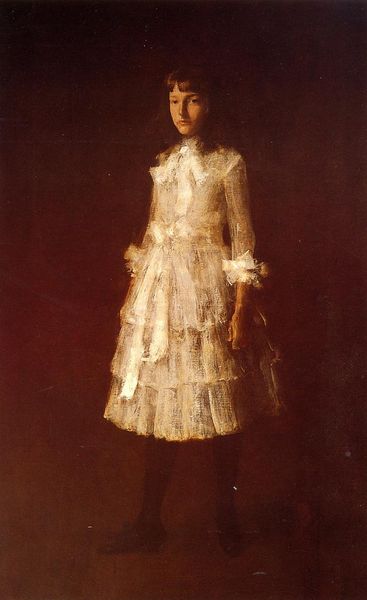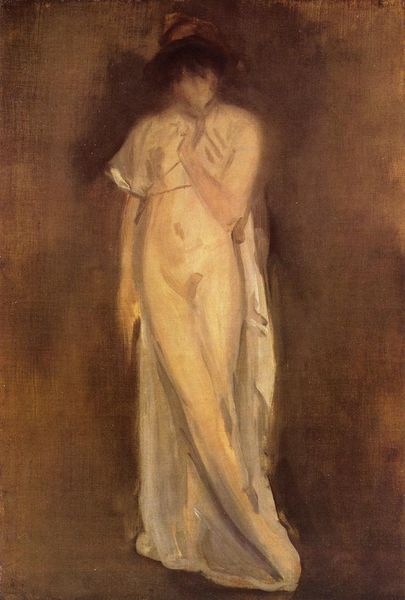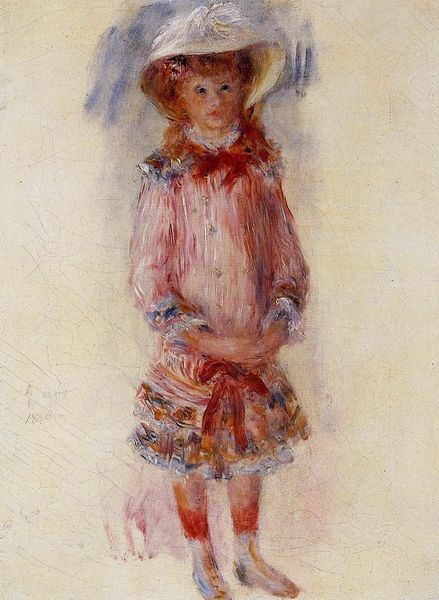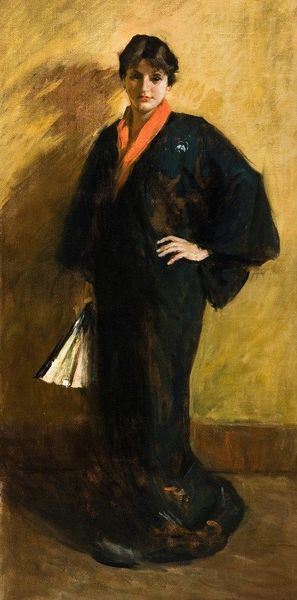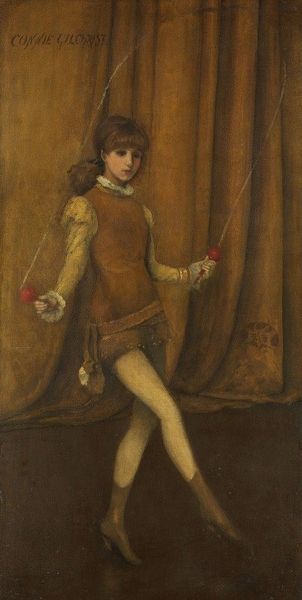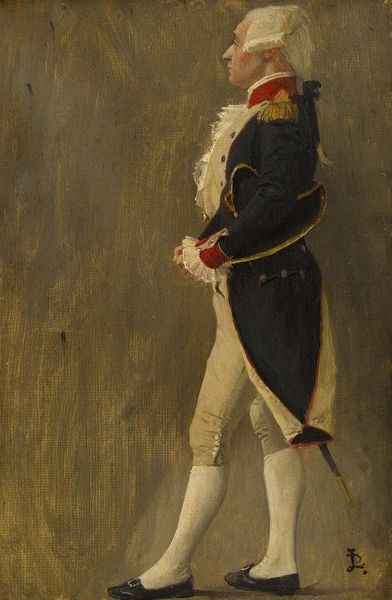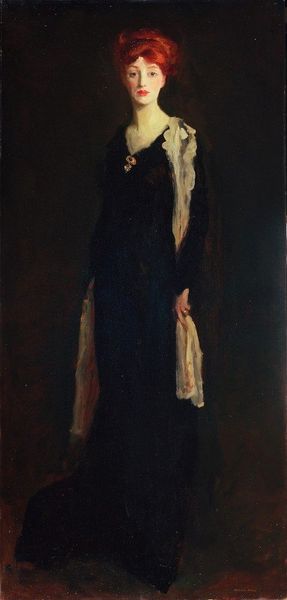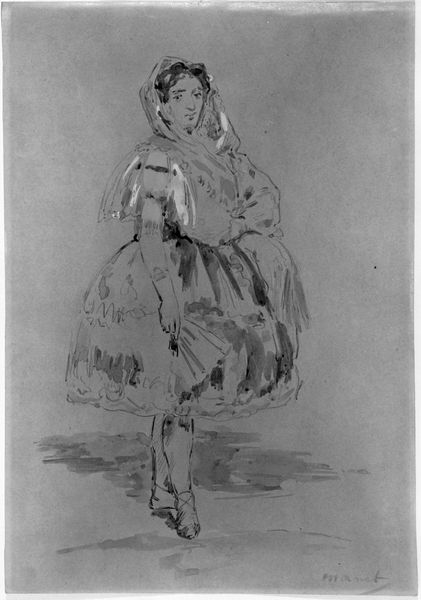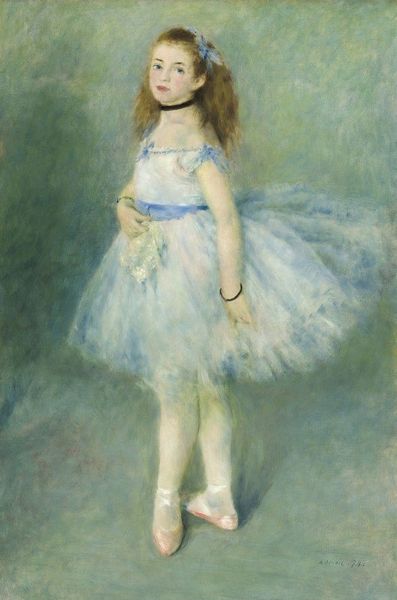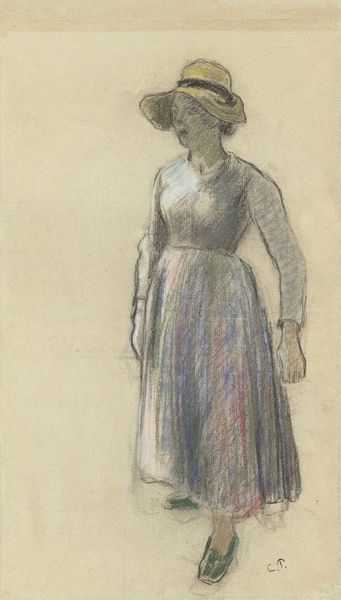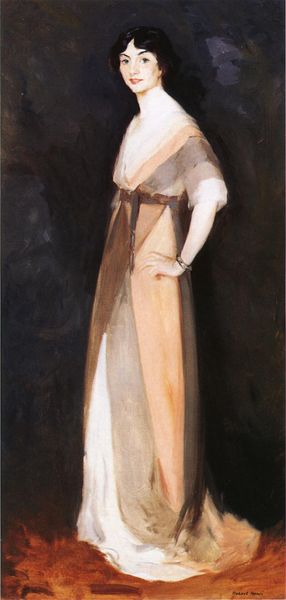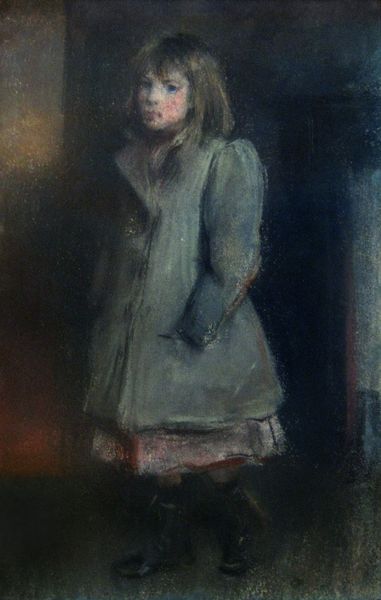
Copyright: Public domain
Curator: This is Renoir's "Madame Heriot en travesti," painted in 1876. The title translates to "Madame Heriot in disguise," which I think captures the playful spirit of the work. Editor: It’s the costume that immediately grabs me, actually. All that iridescent fabric, looking almost pearlescent, painted with such loose, flowing brushstrokes. It screams 'expensive textile.' I wonder who produced the original garment? Curator: Good eye! What’s fascinating is Renoir’s portrayal of cross-dressing here, a theme not uncommon within the aristocratic circles and theaters of Paris at that time. It challenges gender norms in a very particular societal context. Editor: True, but it’s not some subversive act on its own. The handling of the oil paint, layered thin in places, almost transparent, makes this less about political rebellion and more about a commentary on the textures themselves and their manufacture. Think of the laborers who would've produced these elaborate costumes. Curator: But consider how Madame Heriot, a noted actress, leverages this playful androgyny! It adds to her mystique, reflecting how actresses in the 19th century cultivated carefully managed public personas. She has power here, gazing out to the public with a slight smirk. Editor: Oh, I see the smirk! And the way Renoir captures that glimmer in her eye. It's a wonderful depiction of light and personality... all facilitated by material excess, don't forget. How much did that cloth cost, really? I wonder what the labor conditions were like. Curator: Of course, those economic disparities are embedded within the social fabric. However, seeing Madame Heriot inhabit this confident role makes me ponder the impact of public performance on our evolving notions of self and image in modern society. Editor: Point taken. The very act of displaying this piece in the Paris Salon also reveals an attitude to how the 'bourgeoisie' perceived gender itself... an attitude materially expressed through dresses, gendered work, and what’s bought and sold. It's all bound. Curator: Exactly. Seeing this today offers us a look back into the public displays of persona through a lens that acknowledges the intersection between visibility, societal pressures, and material conditions. Editor: Absolutely. So much captured here: textile artistry and paint materiality but it’s also all about public presentation for a changing society of consumers, producers, and spectators.
Comments
No comments
Be the first to comment and join the conversation on the ultimate creative platform.
